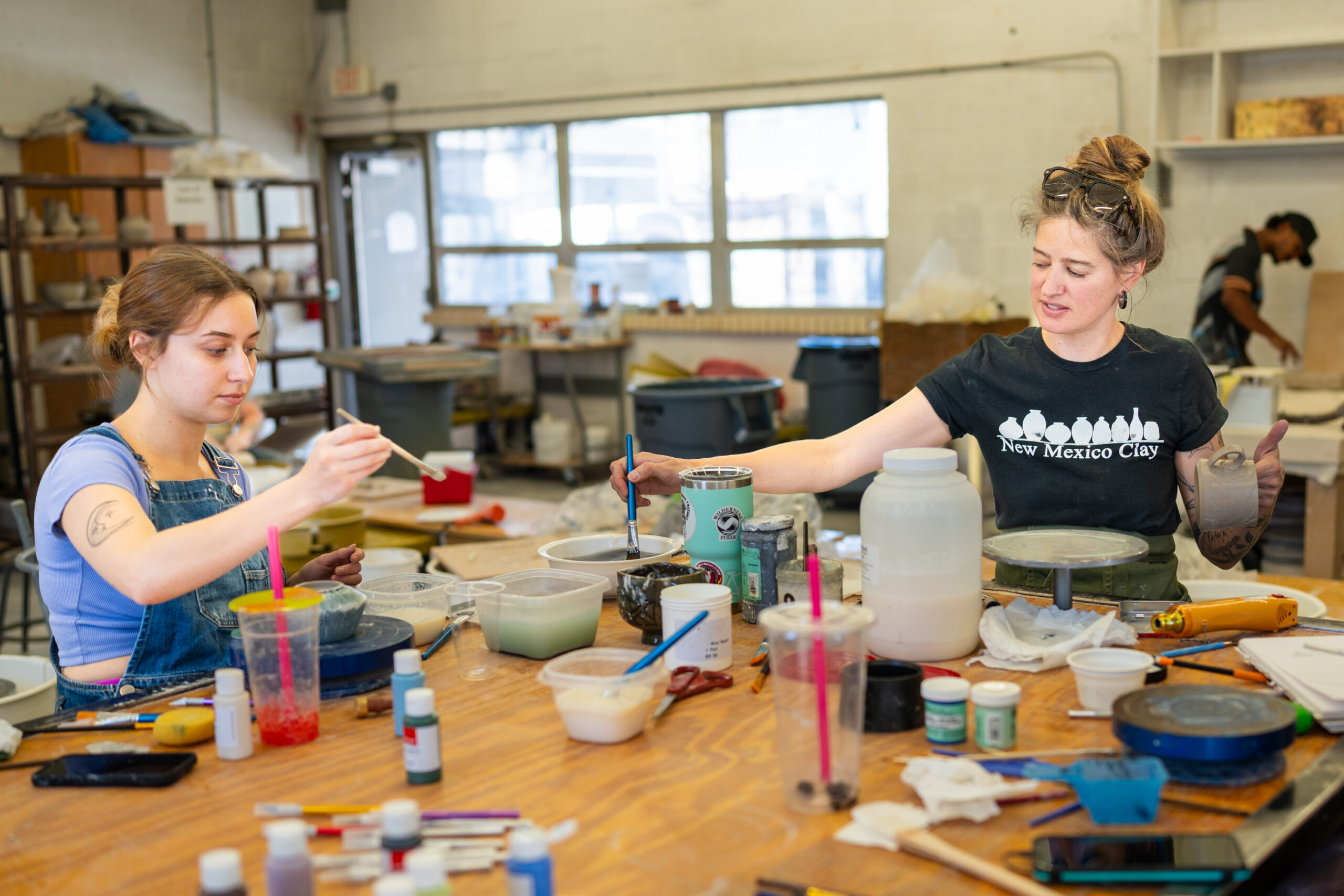SILVER CITY, NM – Ceramic artist Bianka Groves credits her high school art teacher for setting her on her current path. “I was considered a ‘bad kid’ in school, getting into in-school suspension,” explained Groves. “My teacher would come and rescue me out of in-school suspension and put me to work in the clay room, cleaning, scraping shelves, mixing glazes, etc. I loved it. I spent every free moment in that room, and it took over my life.”
Groves, who was a featured artist at this year’s Silver City CLAY Festival, continues to be grateful to her teacher for helping her discover the medium that would become her life’s work. “I am thankful for her every day,” she said. “I didn’t really understand that I could actually be a ceramic artist until after I tried almost every occupation under the sun. I decided to go to art school because no matter what I was doing with myself, I always gravitated back to clay.”
“It’s been about 15 years since I decided I would never work another job again unless it had something to do with ceramics,” added Groves.
As a CLAY Festival featured artist, Groves served as juror for the exhibition “Perception” at Light Art Space, and the gallery also featured an exhibition of Groves’ work, titled “It’s a Fine Line Between…”. In addition, Groves led a week-long workshop on the Western New Mexico University campus focused on “Tatooing Fine Lines on Round Pots.”
The use of lines as surface decoration is a signature feature of Groves’ ceramics. “Playing with line creates subtle elements of designs from landscapes and architecture,” Groves explains in her artist’s statement. “This creates a movement that brings us closer to the object outside of its utility. Decoration and adornment are kept minimal while still allowing an elegant style that embraces its function for daily life.”
Working largely in porcelain, Groves said that the medium itself helped her discover her artistic direction. “It took a few years, but once I started working in porcelain, after years of internal arguments with glazes, realizing there is more to surfaces than glaze, I found my voice in what I do now,” she said.
Influenced by the restrained yet powerful aesthetic of post-WWII potters like Lucie Rie and Gertrud Vasegaard, Groves chose to focus her workshop at WNMU on helping students hone their wheel-throwing skills as well as on introducing them to some of the techniques she uses in her own work, such as using inlay designs as surface decoration in a manner that is similar to tattooing.
The workshop has helped participants to hone their surface design skills, said WNMU student and workshop participant Victor Vasquez. “We have learned a new style of decorating our pieces,” he said. “It has been really great. We have been introduced a new type of wax [resist], and it has helped me to decorate better…. I have really enjoyed it. It is a lot easier, faster and cleaner than the other methods I do.”
Veteran and retiree Jim Pool, who traveled from Tucson to attend the workshop, said that Groves had helped him to develop further as a potter. “She is a great instructor,” he said. “When you do something right, she tells you, and if you do something wrong, she just explains it and makes it easier.”
For Groves, teaching is a natural extension of her own relationship with her medium. “Clay is meditative,” she explained. “It’s such a special part of our world. It comes from the ground, and arguably, anyone who has any kind of attachment to nature—whether it’s walking in the woods or desert, sticking your feet into a freezing mountain stream, or even tending to houseplants—working in clay brings such a peaceful feeling throughout your whole body.”
She added, “It doesn’t matter if it’s earthenware, stoneware, or porcelain; working with it in your hands to create something from beginning to end is sacred, and it calms the mind. I encourage everyone to play with clay.”




